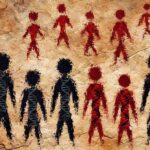There’s something magical about holding a real bone in your hand. The weight, the texture, the small inconsistencies, all of it contributes to a kind of intimacy with the past that textbooks can’t replicate. But what happens when we digitize those bones? When skeletal material is no longer held but rotated, scaled, and studied on a screen?
Far from replacing the physical, 3D models have begun to reshape how we learn about human remains, especially in anthropology, forensics, and archaeology. And that’s not just convenient, it’s revolutionary.
For students who don’t have access to large skeletal collections, digital models become a kind of passport. They allow anyone, anywhere, to examine trauma, pathology, or variation up close. And with high-resolution scans, we’re not sacrificing detail, in fact, we’re often gaining it. A femur scanned at sub-millimeter accuracy may reveal surface features that are easy to miss in person, especially under poor lighting or with a less experienced eye. My current research is exploring these technologies that reveal things we may not have known we should be looking for.
But this transformation goes deeper. Instructors can now annotate models, toggle layers, or simulate pathologies. We can reconstruct remains, test reconstructions, and overlay scans from different individuals to visualize variation. This digital era opens doors for interactive, inclusive, and multi-sensory learning.
Of course, 3D isn’t a cure-all. There’s still irreplaceable value in working with real remains, in the ethical handling, the tactile learning, and the detail. But bones in pixels are no longer just replicas. They’re tools that make the past more accessible, the learning more flexible, and the science more equitable.



